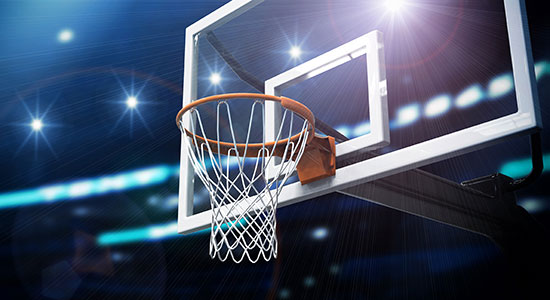
April 7, 2020 – This past Sunday and Monday, the Baylor men and Stanford women claimed the NCAA Division I basketball titles. Just before the Final Fours tipped off, the U.S. Supreme Court heard a case that may define the future of NCAA athletics.
The nation’s High Court heard oral arguments in National Collegiate Athletic Association v. Alston, in which a class of current and former football and basketball players argue NCAA rules violate antitrust laws by limiting compensation for their athletic services.
The case is consolidated with American Athletic Conference v. Alston. The Big Ten Conference is a petitioner in that case, as well as other major conferences.
The Sherman Act prohibits restraints on competition. The student-athletes argue the NCAA’s restrictions produce anticompetitive effects within the market for their labor.
That is, the student-athletes have no choice. If they want to play NCAA Division I sports, they must take whatever compensation is offered to them by the Division I schools regulated by the NCAA, regardless of the competitive value of their athletic services.
But the NCAA argues that some restrictions are necessary to preserve “amateurism,” the key component (the NCAA argues) that separates college and professional sports.
Many fans, the NCAA argues, choose to support college sports for the very reason that student-athletes cannot be paid beyond the costs associated with their education.
A federal district court in California ruled that the NCAA cannot place limits on education-related benefits but declined to rule that the NCAA cannot restrict cash and other payments untethered to education. A federal appeals court affirmed.
Cost of Attendance
The eligibility rules allow student-athletes to be reimbursed for academic and athletic-related expenses, but prohibit compensation as payments for playing a sport.
 Joe Forward, Saint Louis Univ. School of Law 2010, is a legal writer for the State Bar of Wisconsin, Madison. He can be reached by email or by phone at (608) 250-6161.
Joe Forward, Saint Louis Univ. School of Law 2010, is a legal writer for the State Bar of Wisconsin, Madison. He can be reached by email or by phone at (608) 250-6161.
Payments that go beyond the cost of attendance (COA) – set by federal law and financial aid offices to determine the full cost of attending member NCAA schools – are generally prohibited but the COAs can be adjusted on an individual basis.1
However, NCAA rules allow stand-out athletes to receive awards of $175 to $1,500 for MVP or conference player-of-the-year awards. Schools can also annually grant $10,000 graduate school scholarship to two graduating student-athletes.2
Full “grants-in-aid” include tuition and fees, room and board, books and “other expenses related to attendance at the institution,” as defined by financial aid offices.3
In recent years, COA compensation to student-athletes has expanded to include compensation above the cost of attendance.
“This expansion of above-COA compensation has coincided with rising revenue from D1 basketball and FBS football for the NCAA and its members,” noted Judge Sidney Thomas of the Ninth Circuit Court of Appeals,4 which hears appeals from federal district courts in California and other western states, including Oregon and Washington.
“In the 2015-16 academic year, these programs generated $4.3 billion in revenue (a $300 million increase from the previous year) for the Power Five,” Judge Thomas wrote. The Power Five includes the top five football conferences, including the Big Ten.
“And in 2016, the NCAA negotiated an eight-year extension (until 2032) of its multimedia contract for the broadcasting rights to March Madness.”
Pay-to-Play
The student-athlete compensation issue has been bubbling for years. As billions of dollars pour into NCAA collegiate athletics programs, primarily basketball and football, student-athletes have pushed for more compensation beyond the cost of attendance.
In 2019, the NCAA changed its eligibility rules to permit students participating in athletics to financially benefit from the use of their name, image, and likeness.
The move followed passage of California’s Fair Pay-to-Play Act (effective in 2023), which expressly allows college athletes to profit from endorsement deals.
According to the University of Buffalo School of Law, 15 other states – including Big Ten states Minnesota, Illinois, and Ohio – have introduced Fair Pay-to-Play legislation.
But the current litigation attempts to “dismantle the NCAA’s entire compensation framework,”5 as student-athletes compete for a direct piece of the pie.
The student-athletes argue that NCAA schools cannot compete for top talent through better compensation packages for players, but instead compete by attracting them with “palatial” athletic facilities and the best coaches with the highest salaries.6
“Ironically, in six of the eight states that have submitted an amicus brief to express concern about the cost of providing additional education-related benefits to student-athletes, the highest paid public employee is a college football or basketball coach,” the student-athletes noted in their brief to the U.S. Supreme Court.
But the NCAA argues that the “tradition of amateurism” will end if the NCAA is not allowed to cap payments to student-athletes.7
“By permitting such payments for student-athletes’ play, the decision will transform student-athletes into professionals, eliminating the procompetitive distinction between college and professional sports,” the NCCA’s brief states. “Consumers will likely come to view NCAA athletics as just another form of minor league sports.”
The NCAA says it is open to amending rules, such as “rules to allow student-athletes to earn income from their publicity rights consistent with the principle of amateurism.”
But the NCAA says antitrust litigation “should not replace the ability of the NCAA to make the critical judgments about the sports league that they created and administer.”
Numerous parties filed amicus curiae briefs, with arguments on both sides. The parties argued the consolidated Alston cases on March 31, just before the Final Fours began.
SCOTUS blog’s Amy Howe provided the play-by-play of oral argument, noting several justices criticized the NCAA’s “amateurism” argument but others expressed concern that siding with the players could destroy college sports altogether.
Endnotes
1 See In re Nat'l Collegiate Athletic Ass'n Athletic Grant-in-Aid Cap Antitrust Litig., 958 F.3d 1239 (9th Cir.).
2 Id.
3 Id.
4 Id.
5 Id.
6 U.S. Supreme Court Brief in Opposition filed by the student-athletes, Shawne Alston et al.
7 U.S. Supreme Court Petition for a Writ of Certiorari, filed by the NCAA.
